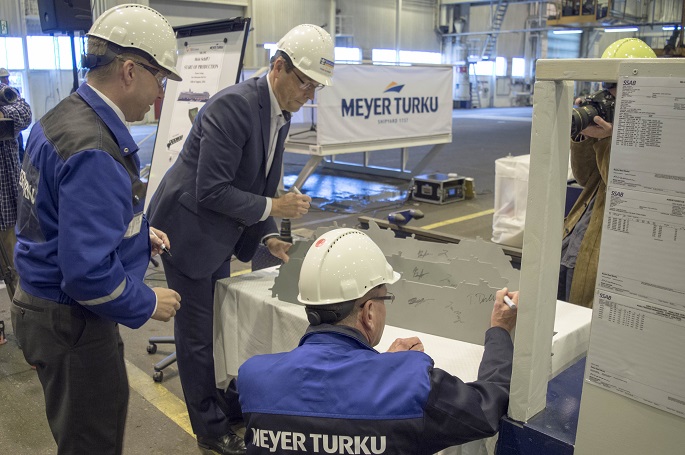Building LNG powered cruise liner
News of sabotage casts shadow over festivity
Published : 31 Jul 2019, 19:00
Updated : 31 Jul 2019, 19:05
While the launch of the construction of Finland's second liquefied natural gas powered passenger cruise liner was celebrated at the Meyer shipyard in Turku, reports about sabotage targeting the first ship nearing completion surprised local media.
The Meyer shipyard in Turku is building the ships for the Italian Costa Cruises line. The Costa Toscana is to be delivered in 2021 and Costa Smeralda will leave the Turku wharf this autumn. Both have gross tonnage of 180,000 and over 2,600 state rooms each.
The steel-cutting festivity for the Costa Toscana on Tuesday was shadowed by the news broken out by the local newspaper Turun Sanomat that sabotage targeting the security systems of the nearly-ready Costa Smeralda have been found in recent weeks.
Tapani Mylly, media spokesman of the Meyer Werft Turku, told the newspaper that the saboteurs were likely to be shipyard workers or subcontractor employees. Mylly said the intention was "likely just to cause nuisance, as no effort has been found to burn the ship". Fire extinguishers had been tampered though.
Neil Palomba, the president of the Costa Cruises that has ordered the ships, said in a statement that "LNG propulsion for cruise ships pioneers a new era in the use of low carbon fuels". The statement was issued before the news about sabotage broke.
There have been no reports that LNG technology in shipping would be in any way controversial in Finland, but there have been media claims about poor working condition at times. The shipyard has been hiring new people and says its order books are full until 2025.
Following British research claims last year that the investments in LNG technology and the required infrastructure would actually prolong the use of fossil fuels in shipping, Anita Makinen, a leading expert at the Finnish traffic safety agency, Trafi said the view was too narrow.
She said that besides reducing sulfur and nitrogen emissions, LNG also reduces particle and black coal emissions. Compared to the use of fuel oil, the use of LNG also reduces carbon dioxide emissions by a third, she told national broadcaster Yle at the time.
The International Maritime Organization IMO aims at reducing emissions by 50 percent by 2050 compared with the level of 2008.


